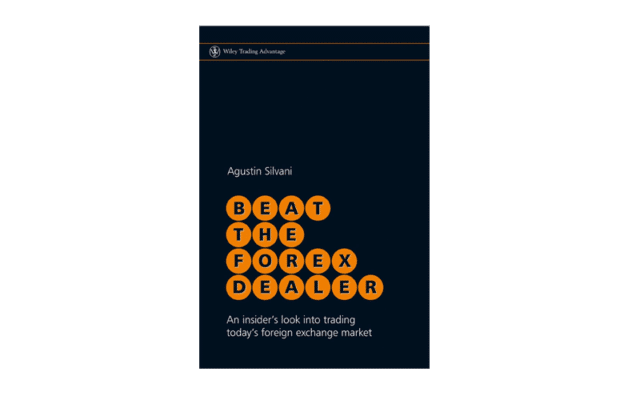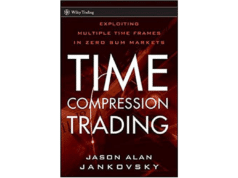Very few forex-related books are as technical yet practical as Beat The Forex Dealer: An insider’s Look Into Trading Today’s Foreign Exchange Market by Agustin Silvani.
A consistent theme running throughout this work is the perception of forex as the ‘slaughterhouse,’ a place for so-called gurus and organizations making trading seem like an easy get-rich-quick scheme.
In reality, there is nothing easy about trading currencies on any scale. Fortunately, Silvani provides practical and simple tips for success. While released in 2009, the insights provided in this body of work have surprisingly remained relevant even in this decade.
Although the author makes some controversial revelations, it stems from making a reader aware of what occurs behind the scenes and what’s really needed for prosperity. This article will cover the main takeaways from the book.
So, who is the ‘forex dealer?’
By forex dealer, the author is mainly referring to the brokers. At the beginning of the book, Silvani details some of the practices by brokers and how trading forex for the retail trader is inherently difficult.
According to Silvani, many of the structures in place put the odds against the average person and essentially provide a ‘house advantage’ to brokers where they will always make money regardless of whether a trader loses or wins.
In a section called ‘The Food Chain,’ he mentions how forex participants are arranged in a pecking order designed so that the ‘top rung always feeds on the bottom dwellers.’ So, for example, the excessive leverage offered by brokers is a contributor to traders blowing up, which is further fueled by their attractive marketing.
The author also references how brokers act as counterparties to their clients and other negative practices against retail traders occurring in forex like insider trading, price shading, front running, etc.
All the bad things occurring in forex are just part of the game, and not much can change it, especially because the market is decentralized. While there seem to be several forces working against the average investor, Silvani does equally acknowledge a trader’s success is ultimately their responsibility.
The significance of the big players in forex
In the first 55 pages, the author spends a great deal outlining all the numerous players in the forex market. This group includes the interbank, consisting of well-known commercial banks who are the largest contributors to forex liquidity.
Other players include large financial institutions like hedge funds and also multinational corporations. Many might not be fully aware that although retail traders are more significant in numbers, they only represent a tiny part of the regular trading volume.
Also, the participants in the markets all participate for different reasons aside from speculating for profits. Most of the volume comes from the interbank and the mentioned institutions due to their sheer size and influence.
Therefore, it’s important to study their behavior in any way possible as they are known to cause all trends and occurrences like stop loss hunting, price manipulation, etc. Essentially, the ‘big boys’ leave traceable footprints, which should be observed at all times to gauge what could happen next.
There’s also a helpful section detailing the typical behaviors to expect during the four trading sessions and how they are caused by the various participants, most of whom are the larger players.
Money management is king
One of the fascinating statements Silvani makes is the importance of money management. Most traders often fixate on when to trade but don’t put as much emphasis on how much to trade.
While the ‘when’ (the strategy) is within one’s control, the outcome is not. In contrast, the ‘how much’ (monetary risk) is perhaps the only factor within a trader’s control, hence why it’s probably the most significant before anything else.
One of the fundamental things is not to be overleveraged. The reason most traders blow up is taking far too leveraged positions, despite the move against them being technically small in pips.
The second consideration is risking a small percentage, and more importantly, allocating a comfortable monetary amount that lets one sleep peacefully at night.
Overall, money management is all about survival, and the longer a trader survives, the closer they can get to profitability.
Understanding the market rather than trying to outsmart it
A chapter in the book titled ‘Picking The Right Approach’ is one of the most important for any forex trader. The author reinforces the idea of trading with a discretionary approach with some element of weakness instead of searching for the holy grail seeking to outsmart the market.
Trading any market is more of an art than a science. Discretionary trading relies on experience, logic, order, intuition, and accurately reading price action to formulate ideas and make decisions.
It is a solid understanding of what drives price in the first place. Using such a method also means knowing when not to trade and also picking the most optimal conditions (trending, ranging, trading certain pairs, etc.) – two things many traders struggle with.
Final word
Despite starting with lots of technical information and some contentious claims, the book overall is highly beneficial. There is nothing necessarily new which many do not already know, but the book just reinforces those concepts in a more meaningful way.
The reality is there are a few structures in place working against the average retail trader. Also, only a tiny percentage ever remains consistently profitable. In summary, the book will shed light on exactly what is needed to prosper in forex from the retail perspective.




